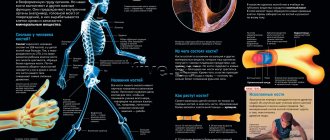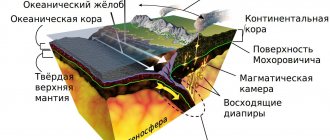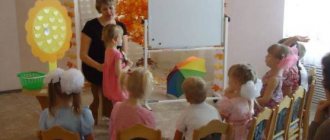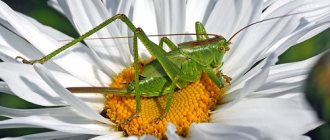Card file of fairy tales on the topic “Space” card file on the world around us (senior group)
A fairy tale about a little star who did not want to sleep.
There are millions of stars in the sky, some of them are big and small, all the stars sleep during the day, and in the evening they wake up and begin to shine. So, one little star once decided that she would not go to bed and directly told her mother about it:
“I want to walk across the sky during the day and see what’s happening on earth, otherwise at night you can’t see anything at all.”
“But you’ll get tired and then you won’t be able to light the light at night,” my mother answered.
- So what? After all, no one will notice, the little star continued to insist.
- Please listen to mom and don’t argue, there are rules that no one should break. People sleep at night and walk during the day, but with us it’s the other way around, that’s how the world works, mother convinced her little star.
Morning came, and mother called the star to go to bed, and she took it and hid behind a cloud, mother looked for her everywhere, but could not find her, mother walked across the sky and called her. The little star waited until her mother disappeared behind the cloud and ran in the other direction. The star walked across the sky all day, saw a lot of interesting things, she saw how children go to kindergarten and school, adults go to work, everyone was busy with something. By evening the star was tired and decided to return home, she didn’t want to shine, but really wanted to sleep. Her mother was waiting for her at home, who was very worried and upset that the star had run away.
“Why did you do this?” Mom asked her.
“Forgive me, mommy, for running away, but I was so interested,” the star answered guiltily.
“I was very worried about you, you upset me greatly, and now we will have to go to bed instead of staying up all night,” my mother answered.
“Mommy, maybe no one will notice that we are not in the sky,” the star said, yawning, and fell asleep.
That night there really were many stars in the sky and no one would have guessed that one naughty star was not shining, only the astrologer, who loved to look at the stars at night, saw that there was no one small and one big star. He got upset and even got a little sick because of this.
This is how it turns out, there is always someone who will worry and worry about us, therefore, in order not to upset those who value us, we must not break the rules by which the world works: stars sleep during the day, and little children and their parents at night.
- The Tale of the Sun and the Moon
Once upon a time there lived the Sun and his little sister Luna. The sun came out into the sky during the day. It shone and warmed the Earth, flowers, leaves, bunnies, squirrels - everyone, all, all. Plants, animals, children, and adults rejoiced at the Sun. And the Sun looked at the world and admired its beauty. Then night came. And the Moon appeared in the sky. She lulled the babies and made sure that no one disturbed their sweet sleep. And this went on for a very long time... But one day the Moon became sad. She also wanted to play with the Sun and enjoy his rays. But when she appeared in the sky, everyone was asleep and nothing was visible.
The Sun saw that the Moon was sad and asked her:
“Sister Luna, what are you sad about?” “I’m sad alone in the dark, brother,” said the Moon. “You shine only during the day, and I appear in the sky only at night.” Come to visit me.
But the Sun answered:
“I can’t go to heaven at night, I’ll wake everyone up.” And at night you need to sleep to rest and gain strength.
Luna became even more sad. And then the Sun said:
-But you can come to me during the day, sister. This won't bother anyone. And at night I will send you my rays. And you will be light and warm!
Luna happily agreed.
And the Sun began to send her its rays at night. The moon, rejoicing, reflected them to all the sleeping ones. So that those who are afraid of the dark will not be so scared at night. And sometimes the Moon came to visit her brother Sunny. And admired the beauty of the world in the sunlight.
So they still live together. The sun takes care of his sister Luna and sends her his rays. And she comes to visit Sunny to enjoy the beauty of this big world with him.
Fairy tale “Why does a month walk without clothes?”
One month I wanted to sew an outfit for myself. The tailor took his measurements.
“Come,” he says, in seven days.
A week has passed. Trying on clothes for a month. Yes where there! It is narrow for him, cramped.
“Apparently I made a mistake,” thought the tailor.
And he says to the month;
-Come back in five days.
The tailor has sewn, sits and waits. And then he sees: a month is rolling across the sky. Round,
big. Here, without trying on, you can see: all the work is in vain. Clothes will be too small.
The tailor was confused and said:
-I can’t sew an outfit for you for a month. Sometimes you’re like a sickle, sometimes half, and
now full. There will never be an outfit that fits you. So a month remained without
clothes.
- Tale of the Moon
High in the sky lived a beautiful Moon named Slava. Stars, Clouds, Clouds and even the bravest Birds, occasionally rising high into the skies, bathed in its silvery rays. One day, a Balloon flew over the Clouds and stayed there to live. He really liked admiring the night beauty. Every Star dreamed of becoming as bright as the Moon, everyone wanted fame and glory. One day, a small but brave Star flew up to her and asked for a silver ray. Glory, without hesitation, gave her its brightest ray. The star thanked the moon and, turning into a ray, flew across the sky. She became so silver, so shimmering that everyone admired her, and the Balloon almost burst in surprise. - Another beauty has appeared! – he exclaimed and began to accompany the radiant Star across the sky. Soon another brave Star asked for a ray from the Moon, and after her it began - brave and timid, dim and bright Stars asked for and received rays of Glory. Luna was kind and did not know how to refuse anyone. And she herself began to turn pale and thin, her strength left her with each passing ray. It became darker and darker in the sky and on Earth. When the Moon became transparent and narrow, it seemed to the Stars that a little more and it would fall to the Earth. “What have we done,” they said, “we thought only of ourselves and destroyed the Moon, which took care of us all.” The stars flew towards her, and one after another they returned the rays of Glory to her mistress. The moon began to quickly recover, began to smile and sparkle more than ever. Balloon did not take his loving eyes off her. The stars twinkled joyfully... And everything would have been fine, but a young daring Star appeared in the sky again, asking the Moon for a ray of Glory. Everything repeated itself and is still repeating itself. That is why the Moon to this day sometimes gets fatter and sometimes loses weight.
- A fairy tale about planet Earth
There lived a small planet. Her name was Earth. Well, she wasn’t that small, just compared to the Sun, big and hot, around which she revolved, she was just a baby.
She moved around the Sun as if she were being twisted by a string. On one half, facing the Sun, it was always summer and day, and on the other side it was always winter and night.
Since the eyes of the Earth were located precisely on the side facing the Sun, they soon became ill from the bright light. The planet tried to turn away, but it jerked too hard and it began to spin. She could no longer stop. So she had to circle around herself (rotating around her axis) and continue moving around the Sun.
It was difficult to rotate all the time, and at first I felt dizzy, but then the Earth got used to it. But now the light did not blind her all the time, but softly illuminated one half and then the other in turn. The day gave way to evening, and then to night, which was replaced by morning. Beauty!
Everything would be fine, but it seemed to the Earth that this was not enough. Day and night are the same length, the season is always the same. Above and below the equator it is always spring, not hot, but not cold either. Summer is only in the middle of the Earth, at its equator, so to speak, at the waist. Of course, there was no such waist, because it was a ball.) The equator was precisely its widest point. At the poles there was eternal morning. The sun stood there forever at the very horizon. Boring(
Then the Earth decided to try to tilt towards the Sun.
It immediately became more interesting. Summer, although at the equator it remains summer, but above it it has also become warmer. The days became longer than the nights, more sunlight fell there, the sun shone directly on the forehead of the Earth and warmed it more strongly. And at the North Pole, eternal day began. True, below the equator, on the contrary, it got colder, winter came, and the days became shorter. And at the South Pole, night became as eternal as day at the North Pole.
The Earth wanted to try to tilt further and see what would come of it, but the Sun looked at it so angrily that the planet lost the desire to experiment. She froze in an inclined position and flew around the Sun just like that. Having flown halfway, she noticed that she was now inclined towards the Sun with the southern hemisphere, and a hot summer came there, the polar day at the south pole (it turned out to be not eternal, only very, very long), in the Northern hemisphere winter came with snow, and at the North Pole there was a long, long polar night, when the Sun did not rise at all. Continuing its flight, the Earth watched with interest how the seasons replaced each other during its full revolution around the Sun. Summer - autumn - winter - spring, and then a new revolution around the Sun, and again summer.
Sunny fairy tale
I will tell you a fairy tale about the Sunbeam, who once disobeyed the Sun, dared to argue with the Law of Nature, and because of this got into a very unpleasant story.
The sun, the star closest to us, shines brightly, warms hotly and gently. In his fiery mane and beard live many hot, sparkling rays. But in space, nevertheless, it is still very cold, dark, even black. Why is this so?
“The Law of Nature,” answered the Sun briefly. The sun constantly threw sheaves, armfuls, small handfuls of rays onto the Earth: depending on whether the evil Sahara, bright Cuba or soft Karelia floated under it. And the Sun always warned its rays:
-You have so many hours of sunshine at your disposal. And don’t deviate anywhere!
-Well, why can’t you run around the cold space a little, a little? Warm him up? - the Sun Rays sometimes asked.
“It’s impossible,” the Sun answered sternly, “it’s impossible: the Law of Nature.” The sun sent its rays not only to our blue Earth, but also to red Mars, and to greenish Venus, and even to our most distant planet - the always sad Pluto. But the Sunbeam, about which the fairy tale is told, has so far only been on Earth.
One day, by the will of the Sun, our Sunbeam and a million million of his brothers found themselves in a wonderful land. It was a huge meadow, overgrown with tall green-green grass, and in the grass there were red, blue, yellow, and white flowers. The sun's rays jumped over the flowers and sang in their sunny language. A woman in a white dress and a beautiful white hat with large curved brims was running across the meadow. She was holding a little girl's hand.
“Look, look,” the beautiful woman almost shouted, although the girl was nearby, “look!” The world is permeated with the Sun! The world is permeated with Sun Rays!
And it was necessary for our Ray to hear these words! And... gathering all his strength, the Beam rushed on its way.
-Unfair, unfair! - he repeated on the fly. – This woman in a beautiful hat thinks that the whole world is permeated by us, the rays of the Sun. And there, far away, it’s dark and cold. Because, you see, THE LAW OF NATURE!
And the Sunbeam rushed to pierce the world, because, he believed, it would be much better.
What about the Sun? It didn’t see where and why its Ray flew? Not really. The Sun, planets, comets and other cosmic inhabitants and, of course, the Law of Nature itself, with their magical vision, perfectly saw a tiny, or rather, almost no Ray in comparison with the Cosmos. Why then didn’t the Sun stop him? Perhaps the Sun also did not consider the Law of Nature to be absolutely true? Don't know. I know one thing for sure: the Sun shook its fiery mane and decided - I will allow it!
At first, flying was not difficult, not scary, even interesting. Planets floated by that other Sun Rays had previously talked about.
Here is a slightly strange planet Neptune. This same Neptune does nothing but try on this way and that, what he considers to be a very original ring.
But then the sad planet Pluto appeared - the edge of the country subject to the Sun, or, as people say, the solar system. The Sun will no longer be able to help its Ray. And it, almost frightened, ordered:
-Come back! Otherwise I don't know what will happen to you. After all, your strength, your warmth, your light without me...
“...will disappear without you, oh Sun,” said the sad planet Pluto slowly and calmly. And at that moment the Sunbeam rushed past her, not paying attention to the order of the Sun and repeating to himself the cherished words: “The world is permeated by the Sun. I'm small but sunny. The world is permeated by the Sun."
That's it. Now, outside the solar system, only the Law of Nature was subject to the Sun's Beam. Of course, the Law of Nature from the very beginning watched over this downright ugly, from his point of view. by the act of the Sunbeam. He decided to strictly punish the offender. This is first. And then?
...It is becoming increasingly difficult for the Sunbeam to fly. He had less and less strength left. The hot thread of the Sun became colder, thinner, paler. The Sun could no longer help its Ray. But the Law of Nature is also not as cruel as it sometimes seems.
-Come back! - he ordered the Ray. - Immediately! Not completely frozen yet. I forgive you.
But the Beam flew forward. He was turning pale and freezing; if he had teeth, he would, of course, have clenched them to stop them chattering. And he flew... He flew. He flew, and that’s it... And that’s it.
The Sun, planets, even distant unfamiliar stars froze in anxious anticipation. We waited. The Great Law of Nature was waiting. And the little tired Sunbeam was flying. He still wanted the whole world to be at least a little permeated by the Sun. But the Law of Nature was not accustomed to disobedience, and therefore he simply threw the Ray into the very middle of the fiery mane of the Sun. Here, among other rays, the pale and almost frozen ray immediately warmed up and shone as brightly as before.
“Thank you, Your Might, Great Law of Nature,” the Sun bowed.
“You need to watch your rays better, otherwise some kind of disgrace will turn out,” the Law of Nature grumbled and added: “I order you, Sun, to take away from this Ray the ability to understand the language of people.” And he muttered to himself: “Just in case, you never know...”
“I obey,” answered the wise Sun.
The sun said “I obey.” But for the first time in his life, and he had already passed several billions, the Sun, honest as fire, decided to lie. It did not prohibit the Ray from understanding the language of people. Why? Who knows…
A fairy tale about the Earth for children of senior preschool age
Once upon a time there lived a beautiful planet Earth. She was buried in the greenery of forests, in the purity of lakes, and was enveloped in clean air. Animals and birds felt good and comfortable on it. People protected her, worshiped her, idolized her.
But one day trouble came to planet Earth - “evil” people who forgot what clean air, blue water, and beautiful forests are. They began to build factories, pollute water bodies,
cut down forests
destroy all living things.
The planet cried bitterly and asked for help.
But the “evil” people did not hear her. They made progress. The planet was offended by them. She began to impose trials on people: disasters, floods, tsunamis. Mother Earth groans. But people don't hear these groans. They don't want to help her. She is waiting for good fellows to come and save her. That they will hear her painful moans and pleading calls. But people remained deaf and blind. And she plunged into darkness.
People came to their senses and began to beg her: “Forgive me.” And she told them to fulfill three conditions: 1. Clear the Earth of waste. And people created special services for cleaning rivers and lakes. Special vehicles began to dive to the very bottom of the rivers and collect garbage.2. Do not destroy forests and animals. And they came up with specially designated places where rare animals were kept and protected.3. Be attentive to your surroundings. People accepted her conditions, and Mother Earth blossomed more beautifully than before.
Yuri Gagarin - the first in space
On April 12, 1961, the world's first man, Yuri Gagarin, flew into space. He took off on a Vostok rocket and was the first to see how beautiful our planet looks from above: curly clouds, a rainbow above the surface of the Earth and a black sky above it. The flight lasted 108 minutes, the same time as a big cartoon - “Frozen” or “Zootopia”.
Gagarin was completely alone in the rocket, but a large team prepared the flight, and Sergei Korolev, a Soviet scientist, was in charge of everything, he talked with Gagarin all the time via radio. The team understood that the astronaut was risking his life and something could go wrong during the flight. Already upon returning to earth, Gagarin saw a flame in the porthole and decided that it was all over, he told the team: “I’m burning, goodbye, comrades!” But everything ended well: the capsule entered the atmosphere, descended to the ground, the astronaut ejected and parachuted not far from the Volga. The first to see him were his grandmother and granddaughter, who were planting potatoes. “I am mine! Russian, Soviet! Came from outer space! - Gagarin told them.
Thus, Yuri Alekseevich Gagarin became one of the most famous people in the world, and Russia and the Soviet Union can now always be proud of being the first to launch a man into space.
What to watch: films about Yuri Gagarin “A Star Named Gagarin”, “Gagarin. First in Space,” a film about Sergei Korolev and Gagarin’s flight “Chief.”
photo: classpic.ru
How do stars live?
Stars are visible not only at night, because our Sun is also a star! It's just that the rest of the stars are too far away from us in the Universe, so they appear small.
New stars are born from clouds of hydrogen gas left after the Big Bang or the explosion of old stars. The force of gravity binds this gas into balls, it rotates and heats up so much that the nuclei of hydrogen atoms combine. This is called a thermonuclear reaction - it occurs with a new explosion, a flash of light - and this is how a new star is born. A star also grows and changes: it can become a “red giant”, then shed its outer layers and turn into a “white dwarf”, explode to become a supernova, and even turn into a “black hole”.
What to watch and read: US TV series “Cosmos: Space and Time.” The story of E. Levitan “Secrets of our Sun”.
To space with children!A selection of amazing space-themed games to play at home. By playing, we gain knowledge in practice! |
Which animal flew into space?
And yet, the first to fly into space were not people, but animals. In 1960, the Soviet Union launched two mongrel dogs Belka and Strelka, 40 mice and a couple of rats into low Earth orbit - they returned unharmed. This way, scientists were able to understand what kind of stress the body experiences in space and when it becomes unbearable. A little later, the dogs Ugolek and Veterok spent three whole weeks in space.
Monkeys, cats, fish, insects, and snails were also sent into space. And two turtles on a Soviet probe flew around the Moon and set a record - they stayed in space for 90 days! But the biggest heroes in this story are the tardigrades. They were simply landed on the moon. These tiny animals are very unpretentious; scientists hope that they will take root on our satellite and become its first inhabitants.
What to watch and read: Roscosmos film “Animals in Space.” Book by D. Chudnaya “Animal Cosmonauts: The First Space Conquerors”, scientific comic book “Rockets”.
The solar system is our “town” in space
Our planet Earth revolves around the Sun. But not alone: next to it there are seven more planets, or eight if you count little Pluto from the coldest farthest edge. Mercury is closest to the Sun, followed by Venus, Earth, Mars, then the giants Jupiter and Saturn and smaller planets - Uranus, Neptune and Pluto (it was recently decided to be considered a dwarf planet, not a real planet - it is too small).
To remember the planets in the right order, there is a special mnemonic “memory”: The Planets are Easy for the Youngest Kid to Remember, Knowing Venus and Mercury. Here “Planets” = “Pluto”, “Not difficult” = “Neptune” and so on.
The planets revolve around the Sun in elongated elliptical orbits. The closest Mercury to the Sun makes a circle in 88 of our Earth days, and the farthest Pluto - in 248 of our years. In addition to planets, comets, asteroids, and cosmic dust fly in the solar system. Overall it's a very busy place.
What to watch and read: BBC series “Wonders of the Solar System”, “A Space Odyssey”. Book by D. Volliman, B. Newman “Professor Astrocat and his adventures in space.”
Moon jump and gravity
On the Moon we can jump much higher and further than on Earth. You can measure your “earthly jump”: go out into the yard, jump, mark the beginning and end of the jump with chalk, measure the length with a tape measure. So, if you add five more of the same jump to your jump, you get a “moon jump”. This is how we would jump on the moon! And all because there is less gravity there. The smaller the weight of a planet or other celestial body, the less it attracts a person and everything that is on its surface. True, on the Moon you will have to wear a spacesuit, and jumping in it will not be so comfortable.
The “Martian jump” is 2.5 times larger than the Earth’s, and on Jupiter, on the contrary, it is 2.5 times smaller. On Jupiter or Saturn it would be difficult for us to even just walk - such is the force of gravity there due to the enormous mass of the planets. But if you are in outer space, far from any planets and asteroids, you will float in weightlessness. That’s why astronauts float in their spaceships as if in water—nothing attracts them.
What to watch and read: BBC series “Planets”, book by R. Pringe “Planetarium”.
photo: www.roscosmos.ru
What do astronauts do?
To become an astronaut, you need to be in excellent health, strong, resilient - and smart, of course. On earth, astronauts train a lot and prepare for flight in order to calmly withstand overloads in space.
When astronauts arrive at the ISS space station, they work in laboratories and conduct a variety of experiments. They study the behavior of matter under conditions of weightlessness and conduct biological and medical experiments. All this is necessary so that people can create new useful materials and understand how weightlessness affects the body. Without this, further space exploration is impossible. Sometimes astronauts don complex, heavy spacesuits and go into outer space to fix something outside the station. They must exercise for two hours a day to keep their muscles in working condition: in zero gravity there is almost no stress, and the muscles weaken. The astronauts eat not from plates - after all, the food would fly away - but from special tubes. And they have to sleep in a sleeping bag, which is tied to the wall. But falling asleep without the usual gravity is also not so easy.
What to watch and read: films “Apollo 13” (12+), “The Time of the First” (6+). Book by D. Kostyukov, Z. Surov “Space. Incredible stories about rockets and space stations, about heroes and inventors..."
photo: www.roscosmos.ru
Spaceships, stations, Mars rovers, lunar rovers
The very first spacecraft flew into space in 1957 - 4 years before Yuri Gagarin, and also in the Soviet Union. It was the first artificial satellite of the Earth, similar to a ball with four legs. It flew and squeaked - it transmitted radio signals to Earth.
Since then, people have invented and launched many devices and stations into space. Some fly in orbit around the Earth, taking pictures of our planet, sending us photographs and other messages. Thanks to them, we have accurate maps and we can also predict the weather better. Other spacecraft, such as the American Voyager, fly far, far away to send us pictures of other planets. Still others land on the Moon or Mars, ride on them and send messages to Earth - these are lunar rovers and rovers. Lunokhods were even able to send samples of lunar dust back to Earth.
The most complex ships are those on which astronauts fly. There are entire space stations that were sent into Earth orbit so that astronauts could fly there as if to work and conduct research. Now the largest station in orbit is the Russian International Space Station (ISS), where cosmonauts from different countries work. To launch an astronaut or cargo from Earth into space, you need a lot of fuel. When a rocket takes off, it burns this fuel and burns itself out almost entirely - only a small capsule remains, which flies further on its business. But today, designers are creating “reusable” rockets that do not burn up during takeoff, but return to earth—these are Elon Musk’s “Falcon” rockets.
What to watch and read: feature films “Salyut-7” (12+), “Man on the Moon” (12+), Russian mini-series about the space race “Open Space”. Books by A. Tkachenko “Tsiolkovsky. The path to the stars”, N. Akulova, M. Kornienko “What can I learn from Sergei Korolev”, O. Solomatin “What can I learn from Elon Musk”.
What is the Universe
The Universe is all the stars, planets, comets, asteroids - all the matter that is around us. All we know about it is that it is very, very big. How it arose and how it develops is one of the biggest mysteries.
But many scientists believe that the Big Bang occurred 13 billion years ago, and from it the Universe was born. After the explosion, it began to expand in all directions: at first they were just vortexes of energy, then tiny particles appeared from them, then they connected and turned into atoms - the “bricks” of which our entire world is composed. At that time, light still moved freely in space, but after hundreds of millions of years, the atoms gathered into huge clouds, which condensed and became the first stars. Then these stars divided into groups - galaxies, and the Universe became similar to what we see now. Planets appeared around many stars.
The universe is growing, and no one yet knows what will happen next. Maybe it will grow endlessly, or maybe after a long time it will begin to shrink back.
What to watch and read: the BBC mini-series “The Beginning and the End of the Universe,” the National Geographic feature film “Journey to the End of the Universe.” Fiction story by E. Levitan “The Fabulous Adventures of a Little Astronomer.”




